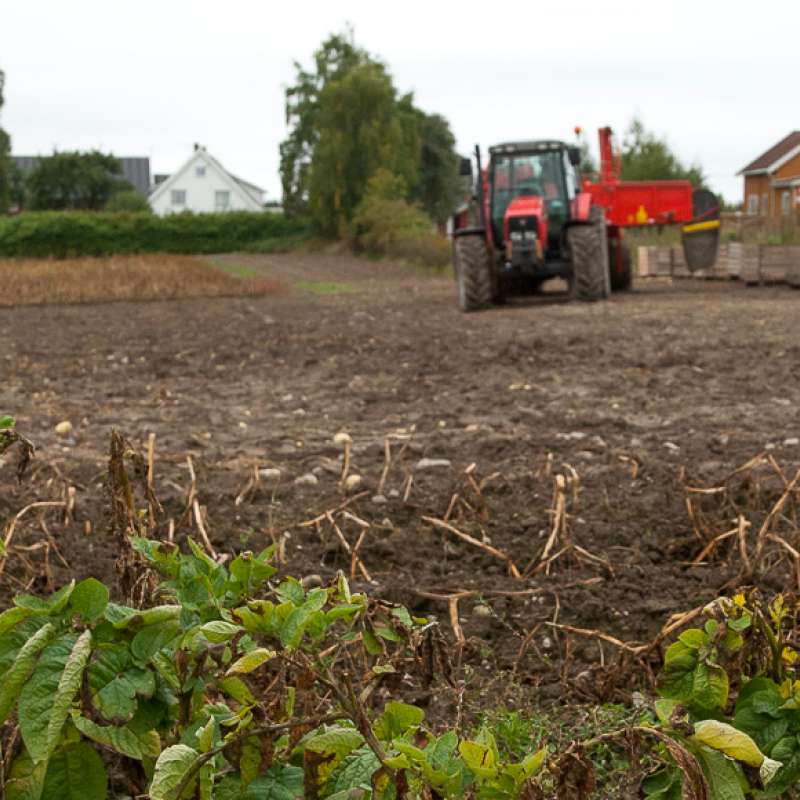Wiktoria Kaczmarek-Derda
Research Scientist
Biography
My current work is focused on weed biology and weed management related to:
- grasslands
- forage crops
- lawns in urban green areas (including golf courses)
- fruit and berries
I also work with management of invasive alien plant species and herbicide resistance in weeds
Abstract
Weed management in the apple orchard is crucial to maintain a high fruit yield and quality. Glyphosate applied twice is the usual strategy in apple orchards in Norway. Due to a recurring debate about the future of glyphosate use and a target in the Farm to Fork strategy of a 50% reduction in pesticide use by 2030, alternative solutions are needed. Two field trials conducted in 2023 in orchards (two- and eleven-year-old trees) are presented here. Six alternative strategies were tested: 1) hot water at 3 L m-2 x 3 (spring, early summer, summer), 2) hot water at 6 L m-2 x 3 (times as previous), 3) pelargonic acid at full dose (10.9 kg a.s. ha-1) x 2 (early summer, summer), 4) pelargonic acid at half dose (5.44 kg a.s. ha-1) x 2 (spring, summer), 5) acetic acid 10% at 25 kg a.s. ha-1 x 2 (early summer, summer) and 6) rotary hoe x 3 (spring, early summer, summer). Glyphosate at 1.08 kg a.s. ha-1 x 2 (early summer, summer) was included as a reference strategy. Hot water (±80 C, 0.1 bar) was applied with a commercial machine (Heatweed Technologies, Norway). For mechanical treatment “Orizzonti Mira” rotary hoe was used. Dry biomass and visual assessments of a percentage of ground covered by living vegetation were used to estimate weed control efficacy. Dominating species were Epilobium sp., Taraxacum officinale, Rumex longifolius in both fields, Aegopodium podagraria and Senecio vulgaris in the two-year-old field and Geranium sp. in the eleven-year-old field. Visual assessed in mid-July, i.e. about 3 weeks after the last application of the treatments, 3 hot water strategies with 6 L m-2 resulted in the highest level of weed control, i.e. 6 and 9% total weed cover in the eleven-year-old field and the two-year-old field, respectively. 3 L m-2 resulted in 16% and 20% total weed cover in the two-year-old field and the eleven-year-old field, respectively. This was better than the glyphosate strategy (23% and 55% total weed cover in eleven-year-old field and two-year-old field, respectively) and much better than pelargonic acid (both treatments), acetic acid 10% and rotary hoe strategy. The results of these trials showed very good efficacy of hot water, especially against annual weeds. No significant benefit of doubling hot water from 3 to 6 L ha L ha-1. Dry biomass was in the same order as visual assessments.
Abstract
Strawberry (Fragaria x ananassa) cultivated in open fields is an important crop in Norway due to its economic and societal value. Strawberry fields are usually kept for three years mainly in a mated-row system and adequate control of weeds and runners in strawberry beds is crucial to obtain a high yield. Due to the withdrawal of diquat, strawberries producers urgently need new solutions for controlling of runners and weeds in their fields. Two trials were conducted in one- and two-year-old strawberry fields. Seven alternative strategies in 4 treatment times, 2 pre-harvest (late spring, early summer) and 2 post-harvest (late summer, autumn) were tested: 1) hot water at 3 L m-2 preceded by mowing x 4 (late spring, early and late summer, early autumn), 2) hot water at 6 L m-2 x 4 (times as previous), 3) pelargonic acid at half dose (5.44 kg a.s. ha-1) x 2 (late spring, early summer) and pyraflufen-ethyl at 0.01 kg a.s. ha-1 x 2 (late summer, early autumn), 4) pelargonic acid at half dose (5.44 kg a.s. ha-1) x 2 (times as previous) and carfentrazone-ethyl at 0.02 kg a.s. ha-1 x 1 (late summer) and pyraflufen-ethyl at 0.05 kg a.s. ha-1 x 1 (early autumn), 5) mixture of pelargonic acid at full dose (10.9 kg a.s. ha-1) and alcohol ethoxylate propoxylate at 0.01 kg a.s. ha-1 x 1 (late spring) and mixture of acetic acid 10% at 25 kg a.s. ha-1 and paraffin oil at1 kg a.s. ha-1 x 3 (early and late summer, early autumn), 6) acetic acid 10% at 25 kg a.s. ha-1 x 4 (late spring, early and late summer, early autumn), 7) mixture of acetic acid 10% at 25 kg a.s. ha-1 and paraffin oil at 1 kg a.s. ha-1 x 4 (as previous). Hot water (about 80 C, 0.1 bar) was applied with a commercial machine (Heatweed Technologies, Norway) and a lawnmower was used for mechanical mowing. Visual assessments of the percentage of ground covered by living vegetation (weeds and runners) and a number of runners between strawberry rows were used to estimate efficacy. Percent damage of the culture was recorded after all spraying times. The last assessment in early October, i.e. about 3 weeks after the last application of the treatments showed a promising effect of hot water alone or combined with mechanical mowing (0-9% total cover of weeds and runners) against runners and weeds. Mowing with a lawnmower enhanced the effect of hot water. Effectivness of bioherbicides were generally weak and the addition of adjuvants did not improve them. The post-harvest treatments with pyraflufen-ethyl (0.01 kg a.s. ha-1 x 2) showed a promising effect on runners and the effect appeared to be durable. Repeated hot water treatments seems to be a good alternative to herbicides against runners and weeds.
Authors
Zahra Bitarafan Wiktoria Kaczmarek-Derda Rafael De Andrade Moral Pierre-Adrien Rivier Therese With Berge Christian AndreasenAbstract
No abstract has been registered

